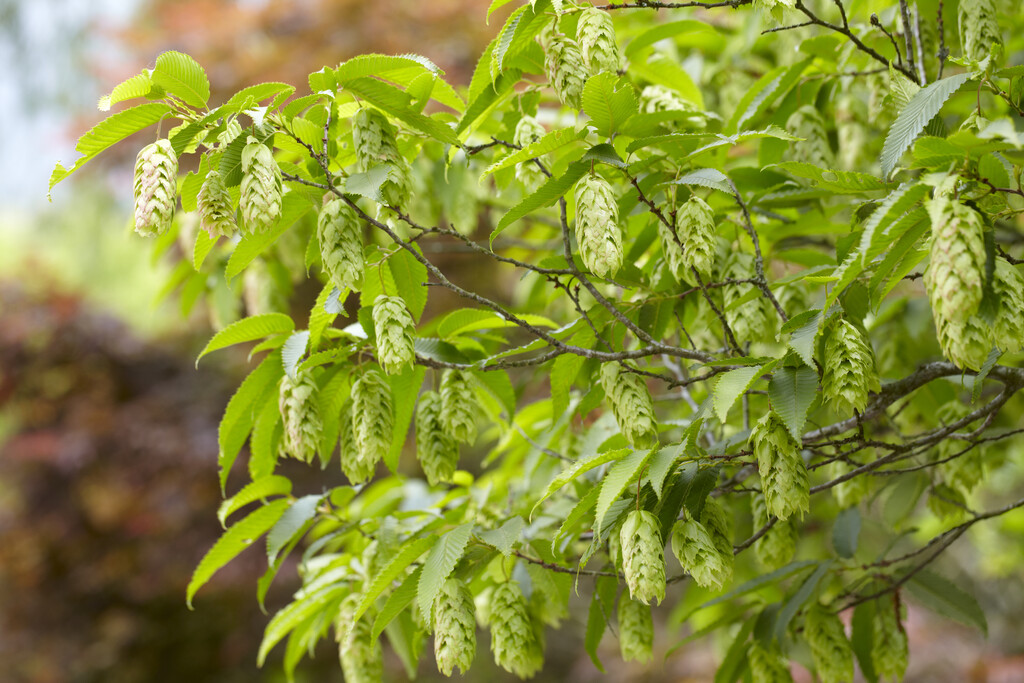Ostrya carpinifolia
hop hornbeam
A deciduous tree, to around 15m high, conical when young and later spreading to rounded, with glossy, oval-shaped, deeply veined green leaves with doubly serrated edges. Yellow-green, pendent catkins open in spring, with male catkins reaching up to 7cm long, and smaller female catkins develop into hanging, hop-like seed clusters in late summer. Leaves turn yellow in autumn.
Size
Ultimate height
Higher than 12 metresTime to ultimate height
20–50 yearsUltimate spread
Wider than 8 metresGrowing conditions
Moisture
Moist but well–drained, Well–drainedpH
Acid, Neutral, AlkalineColour & scent
| Stem | Flower | Foliage | Fruit | |
| Spring | Yellow Green | Green | ||
|---|---|---|---|---|
| Summer | Green | Brown | ||
| Autumn | Green Yellow | Brown | ||
| Winter |
Position
- Full sun
- Partial shade
Aspect
East–facing or North–facing or South–facing or West–facing
Exposure
Sheltered Hardiness
H6Botanical details
- Family
- Betulaceae
- Native to GB / Ireland
- No
- Foliage
- Deciduous
- Habit
- Columnar upright, Spreading branched
- Name status
Correct
- Plant range
- S Europe, W Asia
How to grow
Cultivation
Thrives in fertile, well-drained soil, though will tolerate most soil types. Prefers full sun in cooler areas, can benefit from partial shade in hot summers but flowering and autumn colour are reduced. Protect from strong winds. Can be a host tree for white truffle (Tuber magnatum)
Propagation
Propagate by seed or by hardwood cuttings. Seed requires stratification to germinate
Suggested planting locations and garden types
- Architectural
Pruning
Minimal pruning required, see pruning group 1
Pests
May be susceptible to European oak bark beetle
Diseases
May be susceptible to chestnut blight and a fungal canker
Get involved
The Royal Horticultural Society is the UK’s leading gardening charity. We aim to enrich everyone’s life through plants, and make the UK a greener and more beautiful place.
